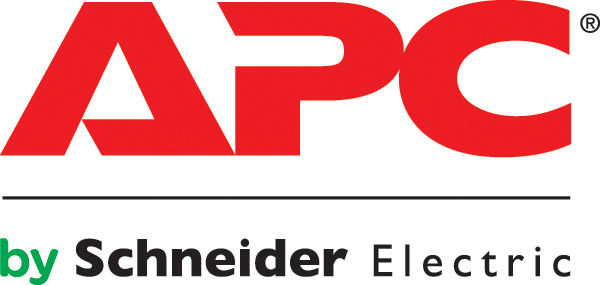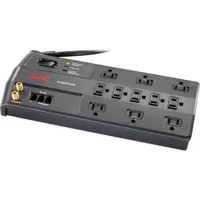APC Issues Statement In Response To Our Power Strip Teardown
Last month we published an article in which we disassembled and photographed an APC power strip. The company has since responded to our post:
Dear Daniel Sauvageau and Tom's Hardware readers,
I am Colin Campbell of APC by Schneider Electric, the person responsible for the business that offers the SurgeArrest products. I first want to thank you for giving attention to this product category and your detailed product tear down. Not many will take the time to critique an IT accessory — from printed warnings to solder quality — as insightfully as you have.
This product was made in our factory in the Philippines, where APC has been a top exporter since 1996. Our factory is a safe, comfortable place to work where our team is treated well and has opportunities to build their career. This team does build products with pride! However, without question, I have to agree with you that we cannot be proud of the workmanship you have uncovered in this vintage sample. We do have the quality credentials and continuous improvement processes that give me the confidence to say that this is not typical, not even close, of our contemporary capabilities. I hope to build back your confidence by addressing some of the concerns your tear down exposes.
- French and English language product warnings are different. I agree fully that our product communication should be complete and equivalent in both English and French. To meet this need, we have evolved our products since the sample reviewed was made, the equivalent product today being the P11VT3MP10-CN.
- Design choice of ground wire routing versus ideal central termination point. Practically, we worked out that the trade-off of the additional 4 milli-ohms of conductor, while negatively affecting suppression by 2 or 3 volts, was a better choice for assembly repeatability in this case. New products always give us another chance to look at such trade-offs anew and we've made improvements in today's available products.
- Receptacle strip contacts and material used. The design and materials used in this product are certified to the standard UL 498 and so have been subjected to a repetition of insertion and retention force life cycle tests. The hardness of the material used in these stampings is well controlled and the connection tested at each part type, for every product made. While the contact points do have to bend to supply retention, there is also an insertion force limit, over which the socket is not allowed to exceed. So, too much spring is not good either. The system relies on the fact that each side of the connection — the socket and the plug — are made to the UL standard and so can allow ease of use (easy insertion) while providing good contact over the life of the product (retention).
- Partial cover and little going on inside the coax protector. Inside the coax protector assembly is a circuit comprised of a unidirectional TVS diode and a ferrite bead. The TVS diode is like an ultra-beefy Zener diode and for this application is better than a gas tube device which has protection and life limitations. The ferrite bead keeps the capacitance of the diode from loading the transmission line and so insertion loss is kept to an absolute minimum up to satellite TV frequencies. Another feature of this circuit is the pcb trace fuse which prevents overheating in the event of a mains fault to the coax wire external to the unit (think antenna wire nailed into the house wiring — it happens). As for exposing the center terminal, since the impedance of the circuit is maintained, the issue is one of RF ingress which in typical indoor situations, would have be quite substantial to cause interference.
- Busted connection caused by external fault. Sorry that I can't quite determine under what conditions the trace was caused to separate, but I like the fix you made.
- Poor workmanship of wire connections to pcb. No excuses, the wire assembly workmanship in this vintage sample is poor. I see in the Comments that one of your readers has guessed that we performed electrical conduction tests on the units, which we do. I doubt you have the old packaging, but if you do, I suggest you take a look inside to find the test slip our factory adds to show the electrical tests performed on that product — every product in fact. This will catch bad connections and most cold solder joints possible when made by hand. We work hard to control this human element in our process. Our continuous improvement process has performed over the years to minimize hand solder by design, and minimize workmanship errors by training, visual inspection and test. I apologize for the quality you have experienced in this product.
Please feel free to contact me if you have any questions or would like to know more about our product design process at APC by Schneider Electric.
Also, in the event you travel to Boston, we welcome you to visit our lab in Andover, MA. Finally, thank you sincerely for your tear down review and please know that we take your feedback seriously.
Colin Campbell
VP, APC by Schneider Electric
Get Tom's Hardware's best news and in-depth reviews, straight to your inbox.
-
dgingeri This is the reason I use nearly all APC brand products in my server lab and at home. They are good. I've never had a quality issue with any of their products. I use their racks and PDUs in my lab, and their UPSes in my home. I have several of their PDUs in my lab that date back over ten years, and they're still going strong. I like any company that takes criticism up front, makes no excuses, and works to make things better.Reply -
deftonian They just got a +1 in my book. Any company that take the time to provide a detailed letter to the public, offering it up to the forums, has integrity... and that's a rare quality in companies these days. Thank you, Colin Campbell, for being honest and forthright. Most of all, thank you for proving you have an active interest in your consumers; their thoughts, opinions, and loyalty.Reply -
10tacle That is a *very* impressive from Colin Campbell and APC! I have been using APC UPSs since the 1990s of various power and have never had an issue with any of them (other than the batteries eventually dying of course). Generally they are a little more expensive than the competition but I am a firm believer in you get what you pay for. I am not comfortable connecting thousands of dollars of equipment to cheaper power backup and protection solutions. This response further gives me confidence to continue to purchase all of my home and small office UPS needs from APC.Reply
Thank you Toms for the original review, and thank you Collin for your response! -
thrakazog I'm impressed that APC stepped up. I hope we see a future article where you tour the Andover lab (with pictures) :)Reply -
TheMentalist And that's the bottom line, cause APC said so!Reply
No, seriously, these guys are awesome. In fact, I'm using APC right now. -
Daniel Sauvageau In case people missed the story this response was about...Reply
http://www.tomshardware.com/picturestory/661-power-strip-bar-surge-protection.html
While a tour of APC's facilities could be interesting, it is a little out of my way from Montreal so I might not get an opportunity to pick Collin up on his offer. -
Acid Snow What a surprisingly wonderful reply from Colin Campbell. Talk about doing his job right!Reply -
mtarpey Give Colin Campbell a raise good sir! In fact, I might start a kickstarter project for that sole purpose.Reply -
CaedenV Looks like Colin had a pretty rough day having that bag handed to him! But I agree with others here, this is a good response and certainly helps the company save face a little bit after such a rough review. APC is one of the biggest brands in that business, and you don't get that way by having shoddy work all of the time. It would be very interesting to pick a new product off of a retail shelf and see if things have gotten better... surely anecdotal, but it would be very interesting.Reply
Please take them up on the tour offer. I mean, it isn't exactly the LHC, but tours are always pretty interesting reads!

